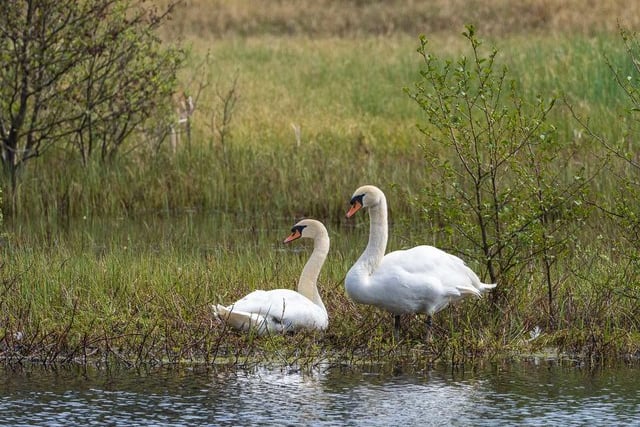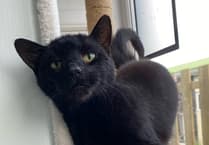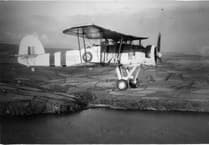It’s hard not to draw human-based conclusions from studies into monogamy, or lack of it, in mammals and birds.
In short, the studies reveal that being a ‘hands on dad’ means it’s more likely that you will have a lasting partnership with a mate.
In most mammal species the male provides very little parental care, other than guarding territory, whilst the female has invested huge energy into gestation, birth and then providing milk for her offspring. Most mammal species do not form lifelong partnerships.
In birds it’s a different story, with the male providing a similar amount of parental care and food delivery. This is why birds tend to have lasting partnerships, with those that have longer life expectancies tending to be more monogamous than shorter lived ones.
The wandering albatross, for example, can live for up to 50 years and it usually mates for life.
It has only one egg in each breeding season and there always needs to be one parent sitting on the nest, which is usually quite exposed, in order to incubate and then protect the chick.
The parents both need to forage, and so they take turns to sit on the nest.
Long-lived species such as the albatross benefit more from strong pair bonds because each time they breed, they fine tune their behaviours, making reproduction more efficient and successful over time. This increases the longevity of the species.
In contrast, the ‘divorce rate’ amongst short-lived species is higher, because of the need to maximise breeding opportunities.
Closer to home, we can observe swans forming lasting partnerships and having only one mate throughout their life – swans can live for 20 years or more.
However, it is a myth that all swans mate for life, albeit the divorce rate, or ‘mate switching rate’ to give it a proper scientific term, is low (estimated to be between three and five per cent). Swan couples will separate and find a new partner, or simply commit adultery, if they fail to produce offspring together.
It’s also a myth that swans will pine after their deceased mate for the rest of their lives. In reality, swans go through a grieving process and often recover, miss a breeding season and then re-enter the courtship process the following year.
Swan couples are also highly effective fighting teams. If they are separated, swans of either sex get threatened more frequently, and come off less well in aggressive encounters.
Females also eat less when separated from their mates. By sticking together, they protect themselves and stay healthier.
Unlike most ducks and geese, the male swan will help to incubate his eggs, allowing his mate to feed more and rebuild the fat reserves she used up in laying them.
Once the cygnets hatch he will help to look after them for between six and nine months by protecting them from predators and finding food sources.
Some of those food sources may well be provided by humans, and so it’s worth reminding bird-lovers not to completely ‘ban the bread’, but to feed it judiciously at this time of year.
Cygnets and ducklings need to develop the foraging skills they need to survive, and eat vegetation that is abundant in late Spring.
Whilst the bread gives them energy it doesn’t provide them with a balanced diet, and too much bread can leave them feeling full without giving them the important vitamins and nutrients they need to grow and develop.
An added risk is that a mother swan or duck coming out to feed on bread will have her offspring in tow, which puts them in greater danger of being ‘picked off’ by hungry gulls.
Feeding too much bread at this time of year can also have a detrimental effect on water quality, with excess food simply sinking to the bottom of a pond and decomposing.

.jpeg?width=209&height=140&crop=209:145,smart&quality=75)

.jpeg?width=209&height=140&crop=209:145,smart&quality=75)
